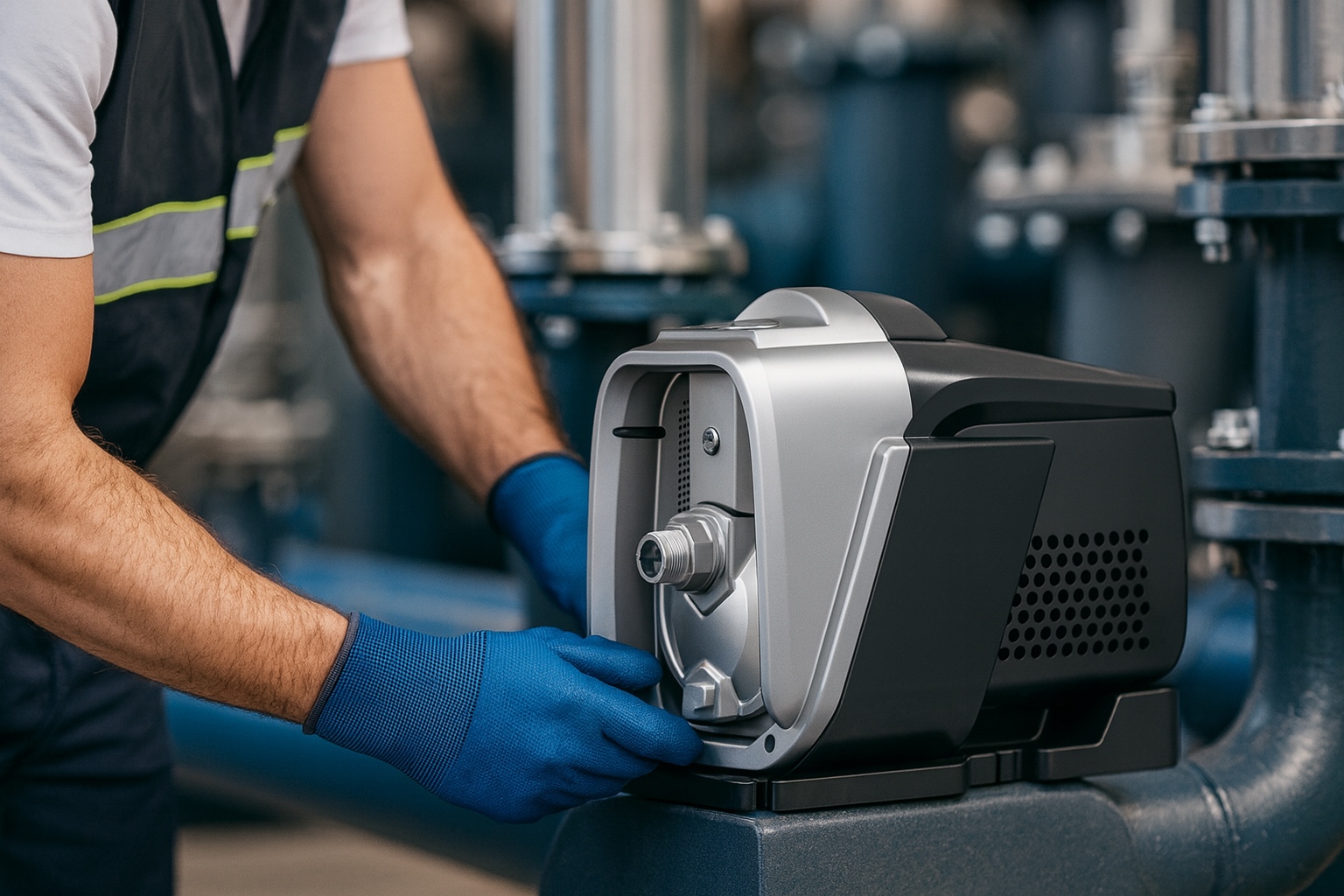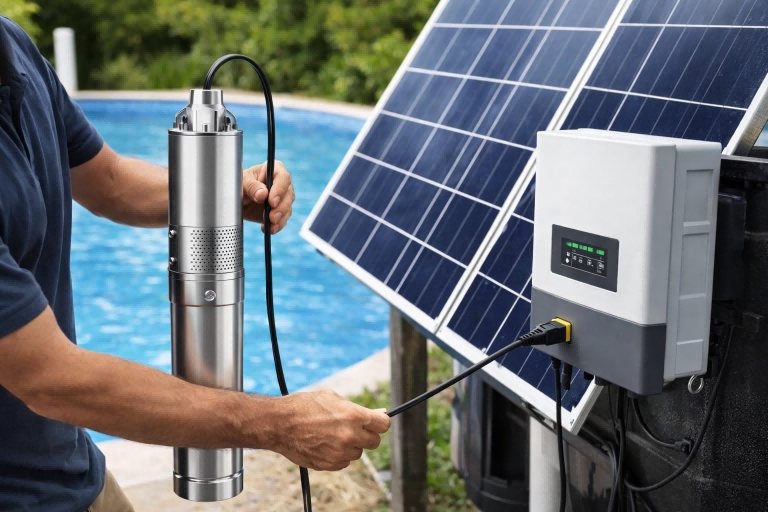Struggling with inefficient fluid transfer?
This problem costs businesses money and time daily.
An effective pump a solution.
Centrifugal pumps are used across nearly every sector, including industrial manufacturing, municipal water systems, agriculture, commercial buildings, and power generation. They are the go-to choice for moving low-viscosity fluids like water, chemicals, and oils due to their simple design, efficiency, and reliability.

Their simple, robust design makes them a cornerstone of modern fluid dynamics.
From powering city water grids to enabling complex industrial processes, these pumps are everywhere.
Understanding their specific applications reveals just how vital they are to our daily lives.
Let's explore the key sectors that depend on the reliable performance of centrifugal pumps.
The Industrial and Manufacturing Sector
Unreliable fluid handling can halt production lines.
This leads to costly downtime and missed deadlines.
Choosing the right pump is essential for operational stability.
In the industrial and manufacturing sector, centrifugal pumps are indispensable for fluid transfer, circulation, and processing. They move raw materials, coolants, chemicals, and finished products, forming the circulatory system of countless factories and plants, ensuring continuous and efficient operation.
The industrial world runs on the consistent movement of liquids.
Centrifugal pumps are the engines that drive this movement.
They are found in nearly every stage of the manufacturing process.
Their versatility allows them to handle a vast range of fluids and conditions.
This makes them a fundamental component of modern industry.
Let's break down their roles in more specific industrial contexts.
Food and Beverage Processing
In food and beverage production, hygiene and gentle handling are paramount.
Pumps must move ingredients without compromising quality or safety.
They need to be easy to clean to prevent contamination.
This is where specialized sanitary centrifugal pumps come into play.
They are constructed from materials like stainless steel that resist corrosion and are easy to sterilize.
The pump's design, known as its hydraulics, is optimized to minimize shear forces.
This protects delicate products like milk, juice, and sauces from being damaged during transfer.
They are used for transferring products between tanks, filling bottles, and in clean-in-place (CIP) systems.
CIP systems use pumps to circulate cleaning solutions through the entire production line.
This ensures that all pipes, tanks, and equipment are thoroughly sanitized without being disassembled.
The reliability of these pumps ensures production schedules are met and food safety standards are maintained.
Chemical Manufacturing
The chemical industry presents a uniquely harsh environment for equipment.
Pumps must handle highly corrosive, toxic, and often volatile liquids.
A pump failure here could be catastrophic, leading to safety hazards and environmental damage.
Centrifugal pumps designed for chemical service are built to be incredibly robust.
They use specialized materials to withstand chemical attack.
| Material | Common Applications |
|---|---|
| Stainless Steel | Mild corrosives, food-grade applications |
| Ductile Iron | General service, non-corrosive liquids, water |
| Titanium | Seawater, chlorides, strong oxidizing acids |
| Plastics (PP, PVDF) | Highly corrosive acids and bases at lower temps |
These material choices are critical for ensuring the pump's longevity and safe operation.
Furthermore, these pumps often feature advanced sealing systems.
Magnetic drive or canned motor pumps are sealless designs.
They eliminate the possibility of leaks, which is crucial when handling hazardous chemicals.
They are used for transferring acids, solvents, polymers, and other chemical feedstocks throughout a plant.
General Manufacturing and HVAC
Beyond specialized industries, centrifugal pumps are workhorses in general manufacturing.
They power machine tool cooling systems, circulating cutting fluids to prevent overheating.
They are used in parts washing stations to spray components clean.
In painting and coating applications, they move paints and finishes.
Within the plant itself, they are a core component of the HVAC system.
Large centrifugal pumps, often called chiller pumps or condenser pumps, circulate water for heating and cooling.
They move hot water to radiators and chilled water to air handling units.
Their efficiency in moving large volumes of water at specific pressures is vital.
This ensures a stable and comfortable working environment for personnel.
It also maintains the optimal operating temperatures for sensitive machinery.
In essence, these pumps provide the essential utilities that keep the entire facility running smoothly.
Their performance directly impacts both operational efficiency and energy consumption.
Municipal Water and Wastewater Management
Cities face a constant challenge to provide clean water.
They also must safely manage wastewater.
This requires a massive, reliable infrastructure network.
Municipalities rely heavily on centrifugal pumps for water supply and wastewater treatment. These pumps are used to draw water from sources, boost pressure for distribution to homes and businesses, manage stormwater, and transfer sewage through treatment facilities, ensuring public health and sanitation.
The infrastructure that supports a modern city is largely invisible.
Much of it operates underground or in specialized facilities.
At the heart of this system are powerful centrifugal pumps.
They work around the clock to meet the demands of the population.
Their role is non-negotiable for urban living.
Let's examine how these pumps function in both clean water and wastewater systems.
Drinking Water Supply and Distribution
The journey of clean water begins at a source like a river, lake, or reservoir.
Large-scale centrifugal pumps, often vertical turbine pumps, are used to lift this raw water into a treatment plant.
Inside the plant, smaller pumps move the water through various stages of filtration and purification.
These processes include coagulation, sedimentation, and disinfection.
Each step relies on the precise control of flow rates, which centrifugal pumps provide.
Once the water is treated and meets drinking standards, it is ready for distribution.
This is where high-service pumps come into play.
These are powerful multistage centrifugal pumps designed to generate high pressure.
They push the water into the city's main water lines.
However, pressure can be lost as water travels over long distances and up to higher elevations.
To solve this, booster pump stations are placed strategically throughout the distribution network.
These stations contain one or more centrifugal pumps.
They automatically activate to increase the pressure back to required levels.
This ensures that even homes and businesses on hills or at the far end of the network receive adequate water pressure.
Modern systems often use Variable Speed Drive (VSD) pumps for this purpose.
The Role of VSD in Water Boosting
Variable Speed Drive, or VSD, technology is a game-changer for municipal water systems.
Traditional pumps run at a single, fixed speed.
They are either on or off.
This is very inefficient, as water demand fluctuates greatly throughout the day.
A VSD pump, however, can adjust its motor speed in real-time.
Sensors in the water main monitor the pressure.
If demand increases (like in the morning when people are showering), the VSD speeds up the pump.
If demand decreases (in the middle of the night), the VSD slows the pump down.
This simple adjustment has enormous benefits.
| Feature | Fixed-Speed Pump | VSD Booster Pump |
|---|---|---|
| Energy Use | Constant high power, regardless of demand | Varies with demand, leading to major savings |
| Pressure Control | Fluctuates, causing potential for water hammer | Stable, constant pressure at all times |
| Wear and Tear | High due to frequent on/off cycles | Reduced due to soft starts and smoother operation |
| Noise Level | Louder, constant motor noise | Quieter, especially during low-demand periods |
By matching output exactly to demand, VSD pumps can reduce electricity consumption by up to 50%.
This translates into significant cost savings for the municipality.
It also extends the life of the pump and the entire piping system by preventing the stress of sudden pressure changes.
Wastewater and Stormwater Management
Just as important as supplying clean water is managing wastewater.
Centrifugal pumps are essential in this process.
Sewage from homes and businesses flows through a network of pipes to lift stations.
Because these pipes rely on gravity, lift stations are needed to pump the sewage up to a higher elevation.
This allows it to continue its journey to a wastewater treatment plant.
The pumps used here are specially designed to handle solids.
They have impellers that can pass waste without clogging.
These are often called solids-handling pumps or non-clog pumps.
At the treatment plant, centrifugal pumps are used at every stage.
They move raw sewage, aerate treatment basins, and pump treated effluent for discharge.
They also handle stormwater.
During heavy rainfall, large centrifugal pumps are activated to move massive volumes of rainwater.
This prevents flooding in streets and protects property.
These stormwater pumps must be extremely reliable, as they are called upon in critical situations.
Agricultural and Irrigation Systems
Farmers need a reliable water source for their crops.
Inconsistent watering can lead to reduced yields and lost income.
A dependable irrigation system is the solution to this problem.
In agriculture, centrifugal pumps are the heart of irrigation systems. They draw water from wells, rivers, or ponds and deliver it under pressure to sprinklers, drip lines, and pivot systems, enabling farmers to cultivate land in arid regions and boost crop yields everywhere.
Water is the lifeblood of agriculture.
Without a consistent and controlled supply, modern farming would be impossible in many parts of the world.
Centrifugal pumps provide the power needed to transform dry land into productive fields.
They have enabled the growth of agriculture on an unprecedented scale.
Their application ranges from small family farms to vast corporate operations.
Let's explore their specific roles in irrigation and other farming activities.
Sourcing Water for a Farm
The first step in any irrigation system is accessing a water source.
Centrifugal pumps are used in several ways to accomplish this.
Surface Pumping
For farms near rivers, lakes, or canals, a standard centrifugal pump is often sufficient.
The pump is placed on the bank with a suction line running into the water.
It pulls the water up and pushes it into the irrigation network.
These pumps are relatively simple and easy to maintain.
They are a cost-effective solution when the water source is readily accessible.
Deep Well Pumping
In many regions, groundwater is the primary source of irrigation water.
This water is accessed by drilling a well.
To lift water from deep underground, a specialized type of centrifugal pump is needed.
This is called a deep well submersible pump or a vertical turbine pump.
A submersible pump is a long, thin unit that includes both the pump and the motor.
The entire assembly is lowered down into the well, fully submerged in the water.
This is highly efficient because the pump uses its energy to push the water up, rather than pulling it.
Vertical turbine pumps work similarly, but the motor is located at the surface.
A long shaft extends down the well to drive the pump impellers below.
Both types are designed to generate the very high pressure needed to lift water hundreds of feet to the surface.
Powering Various Irrigation Methods
Once the water is at the surface, it needs to be distributed to the crops.
Centrifugal pumps provide the flow and pressure required for different irrigation techniques.
| Irrigation Method | How Pumps Are Used | Key Pump Requirement |
|---|---|---|
| Sprinkler Irrigation | Pumps provide high pressure to force water through sprinkler heads, covering large areas. | High Pressure |
| Drip Irrigation | Pumps provide consistent, lower pressure to feed a network of tubes that drip water at the plant base. | Steady Flow & Pressure |
| Center-Pivot Irrigation | A single large pump pressurizes a long, wheeled pipe that rotates around a central point. | High Volume & Pressure |
| Flood Irrigation | High-volume pumps are used to quickly flood an entire field with a layer of water. | High Flow Rate |
The choice of pump depends directly on the irrigation method.
A farmer using drip irrigation may need a smaller, constant-pressure pump.
An operation with large center pivots will require a much larger pump capable of moving thousands of gallons per minute.
Modern farms are increasingly adopting VSD pumps for irrigation.
This allows them to precisely control the amount of water applied.
It also saves significant amounts of energy, reducing operational costs.
By adjusting the pump speed, a farmer can maintain constant pressure across the entire irrigation system, even as different zones turn on and off.
This ensures uniform water application and healthier crops.
Commercial Building Services
Large commercial buildings have complex water needs.
From top-floor offices to basement facilities, consistent water pressure is essential.
Inadequate pressure leads to poor performance and user complaints.
Centrifugal pumps are vital in commercial buildings for HVAC systems, water boosting, and fire suppression. They circulate hot and chilled water for climate control, ensure strong water pressure on all floors, and provide the high-pressure flow required for sprinkler systems during an emergency.
Behind the walls of every skyscraper, hotel, and hospital is a network of pumps.
These pumps are the workhorses of the building's mechanical systems.
They operate quietly and efficiently to provide comfort, safety, and convenience.
Without them, modern multi-story buildings simply could not function.
Let's look at the three primary roles they play.
HVAC Circulation
The heating, ventilation, and air conditioning (HVAC) system is a building's largest energy consumer.
Centrifugal pumps are at its core.
In a typical large building, a central plant generates hot or chilled water.
A network of pipes carries this water throughout the building.
Centrifugal pumps are responsible for circulating this water.
Large pumps move the water from the central plant to air handling units on each floor.
These units contain coils through which the water flows.
A fan blows air across these coils to heat or cool the space.
The water then returns to the central plant to be reheated or re-chilled.
This continuous loop is what maintains the building's temperature.
The efficiency of these pumps is critical.
Using VSD-controlled pumps in HVAC applications can drastically reduce a building's energy footprint.
The pumps can slow down during periods of low demand, such as at night or on weekends.
This saves money and reduces mechanical strain on the system.
Water Pressure Boosting
In a tall building, the water pressure supplied by the city is not enough.
It cannot push water up to the highest floors.
To solve this, buildings use a booster pump system.
A set of centrifugal pumps is installed, usually in the basement or a mechanical room.
These pumps take the incoming city water and increase its pressure significantly.
This ensures that every faucet, toilet, and fixture in the building has strong, reliable pressure.
These systems are crucial for hotels, apartment buildings, and office towers.
Modern Constant Pressure Systems
Older systems used large tanks on the roof to maintain pressure.
Modern buildings use packaged VSD booster pump systems.
These are compact, intelligent units.
They use multiple pumps controlled by a central VSD panel.
Pressure sensors monitor the building's water demand.
The controller adjusts the speed and number of active pumps to precisely match the demand.
If only one person is washing their hands, a single pump might run at a very low speed.
If many people are using water, multiple pumps will speed up to maintain pressure.
This provides a superior user experience with no pressure fluctuations.
It is also extremely energy-efficient.
The quiet operation of these VSD pumps is another benefit, reducing noise in mechanical spaces.
Fire Suppression Systems
Safety is the top priority in any commercial building.
Centrifugal pumps are a critical component of fire safety systems.
Every building with an automatic sprinkler system has a dedicated fire pump.
This pump is connected to a reliable water source.
Its only job is to provide a massive volume of water at very high pressure in the event of a fire.
When a sprinkler head is activated by heat, the pressure in the system drops.
This drop in pressure automatically triggers the fire pump to start.
The pump instantly delivers the water needed to suppress the fire.
These pumps are built to the highest standards of reliability.
They are tested regularly to ensure they will work when needed most.
Their powerful performance can be the difference between a minor incident and a major disaster.
FAQs
What is the main principle of a centrifugal pump?
A centrifugal pump uses a rotating impeller to increase the velocity of a fluid. This high-velocity fluid then flows into a casing (volute) where its speed is converted into pressure.
Can centrifugal pumps run dry?
No, most centrifugal pumps should never be run dry. Operating without fluid can cause the mechanical seal to overheat and fail quickly, leading to significant damage to the pump.
What is the difference between a centrifugal pump and a positive displacement pump?
A centrifugal pump generates flow by creating velocity, and its output varies with pressure. A positive displacement pump traps a fixed amount of fluid and forces it out, delivering a constant flow regardless of pressure.
Why do centrifugal pumps need priming?
Centrifugal pumps are not effective at moving air. Priming involves filling the pump casing and suction line with liquid before starting, which allows the impeller to create the necessary pressure differential to draw in more fluid.
How do you control the flow rate of a centrifugal pump?
The flow rate can be controlled by a throttle valve on the discharge line. For greater efficiency and control, a Variable Speed Drive (VSD) can be used to change the pump's motor speed.
What is pump cavitation and why is it bad?
Cavitation is the formation and collapse of vapor bubbles inside a pump. This happens when the suction pressure is too low. The collapse of these bubbles creates damaging micro-jets that can erode the impeller.
What maintenance does a centrifugal pump require?
Regular maintenance includes checking for leaks, monitoring bearing lubrication and temperature, and ensuring the motor is running smoothly. Periodic inspection of the impeller and mechanical seal is also recommended.
Are centrifugal pumps self-priming?
Most standard centrifugal pumps are not self-priming. However, special self-priming models are available which have a design that allows them to trap fluid and evacuate air from the suction line.
Conclusion
Centrifugal pumps are a foundational technology.
They support industries, cities, and farms worldwide.
Their efficiency and reliability make them the top choice for countless fluid-handling applications.








